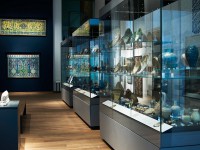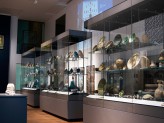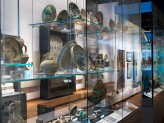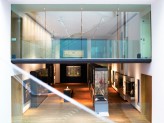Room 31 | Islamic Middle East gallery
Explore artefacts made over a period of more than 1000 years in the heart of the Islamic world.

Introduction
In the early AD 600s a new religion, Islam, was established by the Prophet Muhammad (died AD 632) among the peoples of the Arabian Peninsula. Within a hundred years, the Prophet's successors had conquered the surrounding territories and extended the new Islamic empire over a vast region stretching from Spain to the Indus Valley. In a few generations, Muslims reached East Africa, South-east Asia and China along the trade routes.
The Islamic Middle East gallery displays artefacts made over a period of more than 1000 years in the heart of the Islamic world, where cities like Cairo, Istanbul and Isfahan were the focal points of political, commercial as well as cultural activities. The arts of this vast area shared common traits, while each region maintained its own distinctive identity.
Notice
Objects may have since been removed or replaced from a gallery. Click into an individual object record to confirm whether or not an object is currently on display. Our object location data is usually updated on a monthly basis, so contact the Jameel Study Centre if you are planning to visit the museum to see a particular Eastern Art object.
© 2013 University of Oxford - Ashmolean Museum





